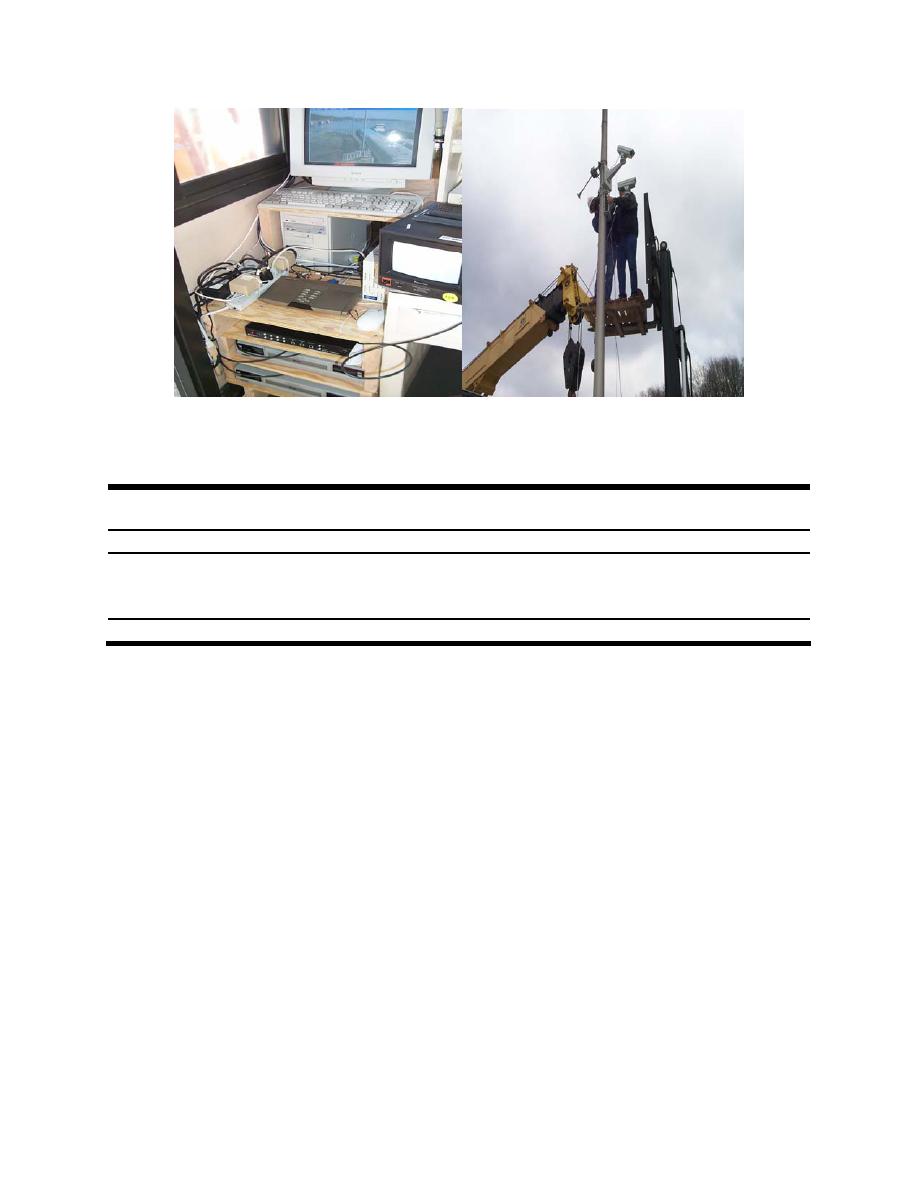
ETL 1110-2-563
30 Sep 04
Figure B-9. Demonstration of time-lapse equipment installed at Kentucky Lock
(computer acquisition system on left and time-lapse camera on right)
Table B-3
Typical Ranges for Impact Velocities for Preliminary Analyses
Load Condition
Forward Velocity V0x, ft/sec
Lateral Velocity V0y, ft/sec
Usual
0.5 2.0
0.01 0.1
Unusual
3.0 4.0
0.4 - 0.5
Extreme
4.0 6.0
<1.0
Note: To convert ft/sec to m/sec, multiply by 0.3048.
(6) Angular velocity. Barges tend to rotate about their center of mass and not typically at the geo-
metric center of the barge train. If this rotation is significant, it can cause either an increase or decrease in
the velocity components for the impact. For preliminary design, the angular velocities can be ignored in
the impact analysis. If there is concern about outdraft currents at a navigation site, rotation of the barge
train should be investigated using a hydraulic scale model. Note that during the experiments used to
establish the empirical model, as described in Appendix F, care was taken to minimize rotation of the
barge train before and after impact.
(7) Angle of impact.
(a) The angle of impact for a barge train governs the magnitude of the velocity components to the
wall. This parameter is very important to define as accurately as possible. The impact angle typically may
be assumed to be a function of site geometry, functional layout, and flow conditions. The angle is also
heavily influenced by the towboat operator's ability to maneuver into the lock approach under adverse
operating conditions such as high flows or stormy weather. The impact angle can be captured using either
of the methods (scale models or time-lapse) as discussed. Scale model experiments may lead to less
accurate angles unless special provisions are made to account for the effects of water cushioning. Caution
should be exercised when using time-lapse video to measure the impact angle. A range of angles should
be calibrated in the field of view and applied to the results to avoid inaccuracies that may be in the range
of 10 to 20 percent.
B-12


 Previous Page
Previous Page
